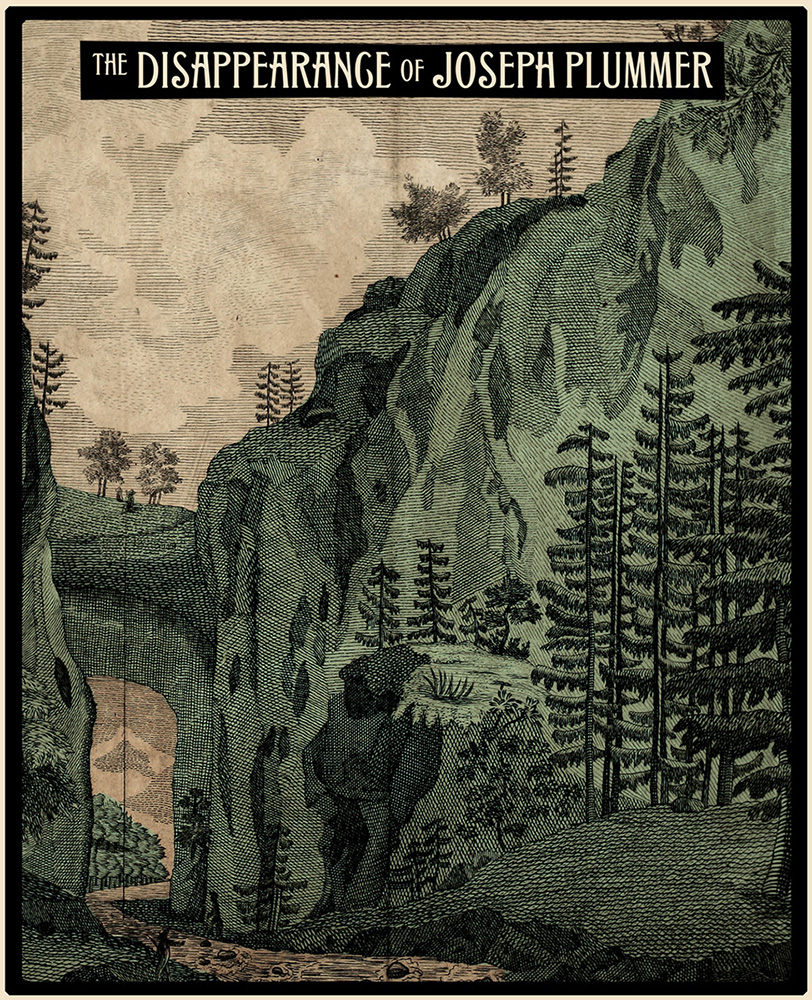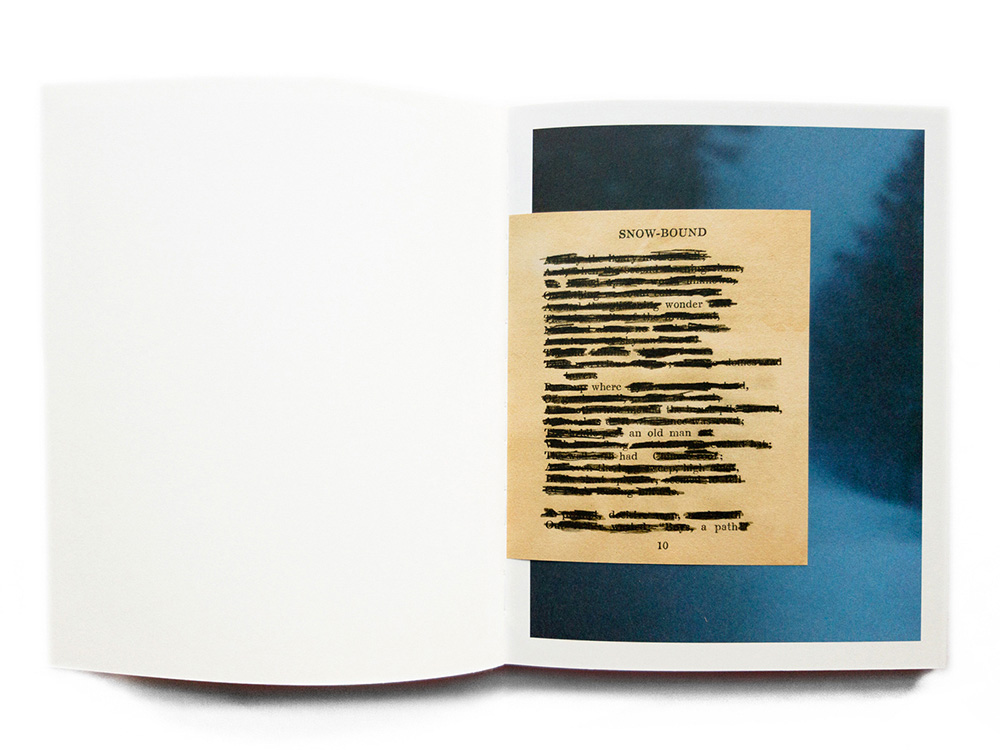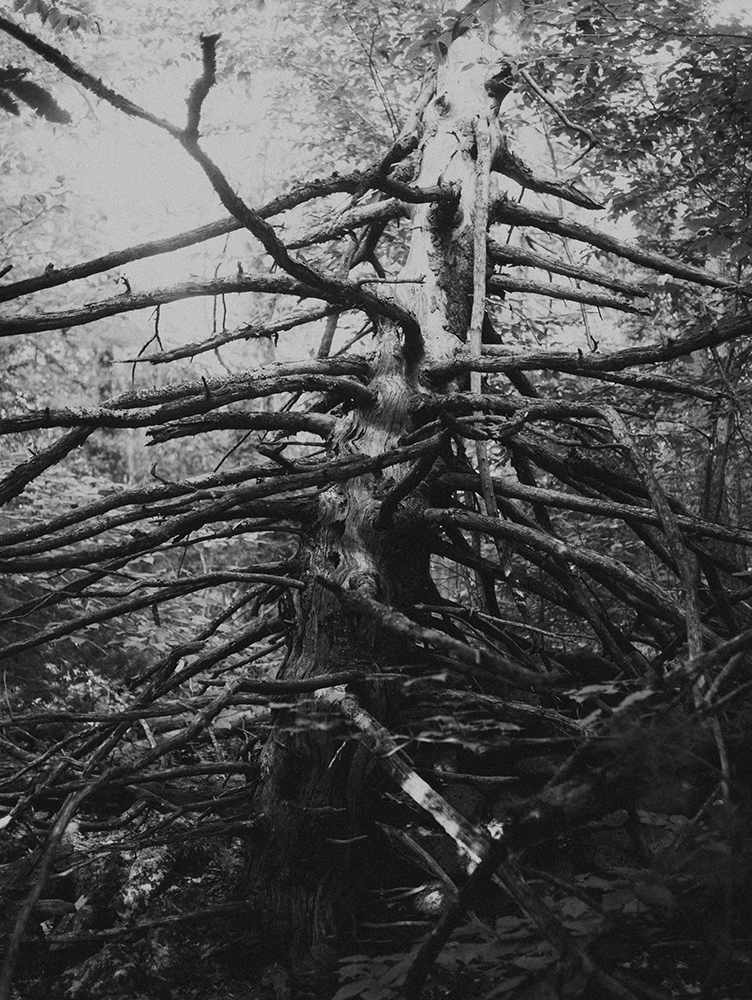Amani Willett: The Disappearance of Joseph Plummer
Photographer Amani Williett is an adept storyteller, creating cinematic visual screenplays that carry us into terrain of the mind and the imagination. His earlier monograph, Disquiet, has stayed with me over the years and as we struggle to understand our the state of the world in 2017, it has more meaning than ever. Amani has a new story, published by Overlapse, The Disappearance of Joseph Plummer , a “curious tale spun from the life of mysterious hermit Joseph Plummer, who lived in the woods of central New Hampshire in the late 1700s”.
From the tree branch end papers, the reader enters unfamiliar territory of that space between truth and fiction, between David Lynch and John Ford, where history is subjective and things go bump in the night. Willet uses the dark woods, redacted text, ephemera and old photographs to create a narrative focusing a hermit who 200 years ago, lived on land that Willet’s family now owns in central New Hampshire. Presented as surreal and cinematic story telling, The Disappearance of Joseph Plummer is the perfect combination of nightmare and daydreams, beautifully mysterious and intriguing, in the style of all good novels.
Based in Brooklyn NY, Amani Willett‘s photography is driven by conceptual ideas surrounding family, history, memory, and the social environment. His first monograph, Disquiet, (Damiani, 2013) – a meditation on starting a family in a time of social unrest and uncertainty in America – was selected as one of the best books of the year by PDN, Photo Eye (Todd Hido) and Conscientious (Joerg Colberg). Willett’s photographs feature in the books Bystander: A history of Street Photography (Lawrence
King), Street Photography Now (Thames and Hudson), New York: In Color (Abrams) and in a wide range of publications including American Photography, Newsweek, Harpers and The New York Times. Amani completed an MFA in Photography, Video and Related Media from the School of Visual Arts, NY in 2012.
Searching for a place to be at peace in the wilderness, my dad bought seven acres of undeveloped land in central New Hampshire in the late 1970s. It wasn’t until 2010 that I became curious about the story of a man named Joseph Plummer, who we were told lived in the same woods during the late 1700s and 1800s. It was said this local legend left his town of a mere 100 people to be in seclusion. Researching and finding very little concrete information about Joseph has paradoxically heightened his presence in my mind and inspired me to seek out what drove him from his life. I uncovered some of his personal belongings and spent summers tracking down the places where he spent his days. Interviews with local residents told of his hostility to “loafers and spendthrifts” and his “mortal opposition to progress, generally.” But the scant information about Joseph only inspires more questions and feeds his local mythology.
I believe the story of Joseph Plummer parallels my dad’s and now my desire to disappear into the landscape of central New Hampshire. Joseph’s world is an unabashedly romantic view of nature and its sublime power, yet his life and the landscape he inhabited exude the mystery of the unknowable. My dad and I often take long walks in the New Hampshire woods, usually ending up searching for where the hermit lived. While we’ve been to the site of his long-gone home many times, we somehow
always get lost along the way – and getting lost seems to be the point. In our modern world when it can be difficult to disconnect, following Joseph’s path into the woods offers a welcome respite. – Amani Willett

Portrait of a Hermit ©Amani Willett, from The Disappearance of Joseph Plummer, courtesy of Overlapse
Posts on Lenscratch may not be reproduced without the permission of the Lenscratch staff and the photographer.
Recommended
-
Martin Stranka: All My StrangersDecember 14th, 2025
-
Interview with Maja Daniels: Gertrud, Natural Phenomena, and Alternative TimelinesNovember 16th, 2025
-
MG Vander Elst: SilencesOctober 21st, 2025
-
Photography Educator: Josh BirnbaumOctober 10th, 2025
-
Aiko Wakao Austin: What we inheritOctober 9th, 2025


















































































